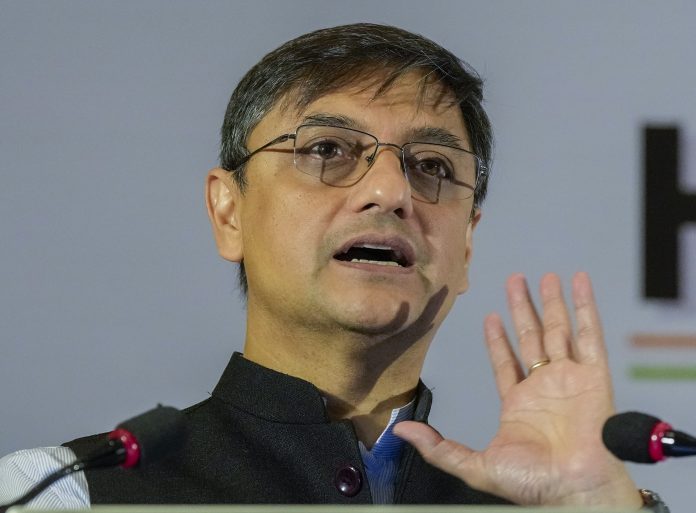NEW DELHI, Apr 11: India’s economic growth performance is ‘good’ and efforts now will be needed to sustain it, as there are concerns about the external environment, which are not quite settled, Economic Advisory Council to the Prime Minister (EAC-PM) member Sanjeev Sanyal said on Thursday.
Sanyal noted that if the weather condition and the monsoon turns out to be favorable, then food prices will hopefully get tempered as well. This will lay out conditions that will be quite conductive for a growth momentum of 7 per cent or so, to be carried through even under somewhat uncertain global situations.
”Our current economic growth performance, I would argue, (is) rather good. And the game now from here on is to be able to sustain it,” he told PTI in a video interview.
India’s economy grew by better-than-expected 8.4 per cent in the final three months of 2023 — the fastest pace in one-and-half years.
The growth rate in October-December was higher than 7.6 per cent in the previous three years, and it helped take the estimate for the previous fiscal (April 2023 to March 2024) to 7.6 per cent.
Recently, the Reserve Bank retained the GDP growth forecast of 7 per cent for 2024-25 financial year.
”… While we are very confident of our domestic growth momentum in our economy, there are certainly concerns about the external environments, which are not quite settled,” he said.
Sanyal explained that exports continue to be quite weak, and there is not yet any momentum in global exports. Moreover, ”very recently, there was spike in oil prices… going up to USD 91 per barrel because of tensions in the Middle East, destruction of Russian oil facilities by Ukrainian attacks and a variety of other reasons,” the EAC-PM said.
Asked about long-term solutions to high food prices, Sanyal said high food prices to a large extent is not a production problem, but actually a storage problem.
”After all, Singapore and Dubai do not grow tomatoes and onions. Their onion and tomato prices don’t go spiking in the way we have this and every year. Some vegetable or the other, onion, tomato, potato, whatever, something will go spiking off the charts,” he said.
Emphasising that investment in storage also means that private markets in agriculture become more vibrant and strengthened, Sanyal said, the issue can be solved by states by formulating various kinds of mechanisms for storage of vegetables.
”Of course, the import and export of food material is also an issue. But yeah, but this (high) vegetable price issue… ultimately the solution to this issue is private markets and storage,” he said.
Asked why foreign direct investment is slowing down in India, Sanyal said it is not only happening in India, worldwide foreign direct investment has significantly come down.
”But given the inquiries, we are getting the projects that are getting going, I am more than certain that the underlying momentum of FDI is very, very strong,” he asserted.
According to OECD data, India’s share of global FDI fell from 3.5 per cent in the first nine months of 2022 to 2.19 per cent in the same period in 2023.
The sharp drop of 54 per cent is much steeper than the overall global FDI inflow decline of 26 per cent in the first nine months.
To a question on India’s China-plus one strategy, he said what India needs to do is create conditions for certain kinds of industries to build up enough capacity.
Sanyal pointed out that Apple not only moved its iPhone manufacturing facilities in India, it has also moved a large ecosystem here. ”A lot of big companies are in the process of moving,” he said, adding it takes a little bit of time.
Responding to a question on unemployment in India, Sanyal said the fact of the matter is, there is a need to generate jobs.
Emphasising that growth ultimately is the single most important solution for unemployment, he said therefore compounding this growth over the next several years is absolutely critical.
Sanyal said he is not a believer that in the medium-to-long-run, there is any such thing as jobless growth. ”All growth ultimately generates jobs. You can have skill mismatches. You can have all kinds of other problems, but you can not generate jobless growth over long periods of time,” he opined.
According to a recent International Labour Organisation (ILO) report, more than 80 per cent cent of India’s unemployed workforce comprises its youth.
Trending Now
E-Paper


